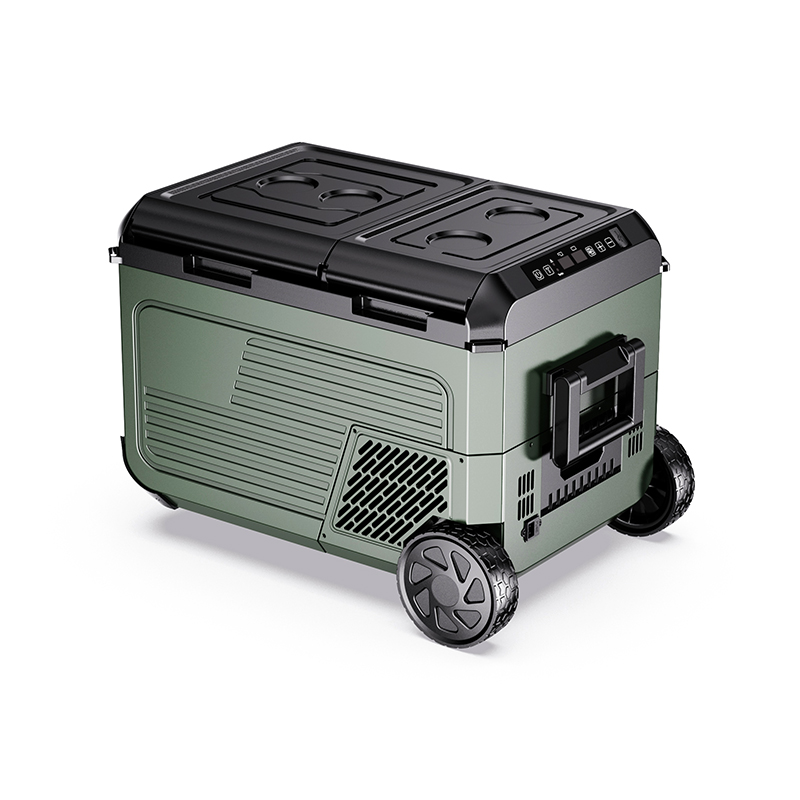Compared with traditional incubators, car refrigerators have the following core advantages:

Temperature control capability
Precise temperature control: Using semiconductor or compressor refrigeration technology, it can achieve precise adjustment from -18℃ to 10℃ (error ±1℃), meeting the storage needs of different ingredients
Fast refrigeration: The compressor model can drop to 0℃ in as fast as 30 minutes, which is more than 5 times more efficient than ice packs.
A portable electric freezer for car offers a dependable way to keep items frozen or chilled without relying on ice or access to external refrigeration. These freezers plug into a vehicle's 12V outlet and are compact enough to fit in the trunk or back seat. Their convenience makes them especially useful for road trips, camping, grocery shopping, and long hours on the road.
One of the main advantages is their ability to maintain a consistent temperature, often reaching as low as -20°C (-4°F). This ensures that frozen foods, medications, or temperature-sensitive items stay preserved, even in hot climates or extended stops.
Many models now come with dual-zone capabilities, allowing one compartment to function as a freezer and the other as a refrigerator. This flexibility adds value for users who need to store different types of items during the same trip.
For families, outdoor workers, delivery drivers, or full-time travelers, portable freezers reduce dependence on external stores and help maintain a stable food supply. When paired with portable power stations or solar panels, they can operate for extended periods off-grid, making them a useful tool for self-sufficient travel.
Portable electric freezers are a reliable solution for anyone who needs mobile refrigeration that goes beyond basic cooling.
What Materials Are Used in Small Chest Freezers for RVs?
The performance and longevity of a small chest freezer for RV use rely heavily on the materials used in its construction. Since RV environments involve frequent movement, variable temperatures, and limited space, these freezers are designed with lightweight, durable, and insulated materials to meet specific travel needs.
1. Outer Casing – Plastic or Metal:
Many RV chest freezers use high-impact plastic (ABS or PP) or powder-coated steel for the outer shell. Plastic models are lightweight, corrosion-resistant, and generally more affordable. Metal units offer greater durability and scratch resistance, though they may weigh slightly more. The choice often depends on whether portability or ruggedness is more important to the user.
2. Insulation – Polyurethane Foam (PU):
High-density polyurethane insulation is the standard for keeping internal temperatures stable. It traps cold air effectively and reduces the load on the compressor, allowing the freezer to run efficiently, even in warm weather. PU foam is lightweight, has thermal properties, and contributes to energy savings.
3. Interior Liner – Aluminum or Plastic:
The inside of the chest freezer is usually lined with aluminum or food-grade plastic. Aluminum is more thermally conductive, allowing faster cooling, while plastic is easier to clean and less prone to dents. Both materials are chosen for their hygiene, ease of maintenance, and compatibility with food storage.
4. Seals and Lids:
High-quality rubber gaskets are used around the lid to ensure an airtight seal. This prevents cold air from escaping and warm air from entering, which is critical for energy efficiency. The lids themselves are often insulated and may include secure latches to keep them closed during travel.
The materials used in RV chest freezers are carefully selected to offer a balance between durability, performance, and portability. This ensures they meet the unique demands of life on the road, delivering dependable cooling with minimal maintenance.